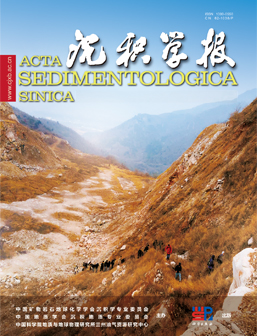Method for assessing the degree of weakening of hydrocarbon transport capacity of oil source faults by mudstone caprocks and its application
doi: 10.14027/j.issn.1000-0550.2025.025
- Received Date: 2024-10-20
- Available Online: 2025-10-17
-
Key words:
- Key words: mudstone caprock /
- oil source fault /
- hydrocarbon transport capacity /
- degree of weakening /
- research method
Abstract: Abstract: In order to study the characteristics of hydrocarbon enrichment at oil source faults above mudstone caprocks in petroliferous basins with developed lower source rocks, based on the research on the mechanism and degree of weakening of hydrocarbon transport capacity of oil source faults by mudstone caprocks, we use the paleo-fault throw, dip angle, paleo-normal pressure generated by the weight of overlying sedimentary load, paleo-formation pore fluid pressure difference of source rocks, and hydrocarbon supply capacity index within the mudstone caprock to calculate the hydrocarbon transport capacity index of oil source faults that do not penetrate the mudstone caprock. Then, we divide this value by the paleo-connection thickness of the mudstone caprock to obtain the hydrocarbon transport capacity index of oil source faults that penetrate the mudstone caprock. According to the relative magnitudes of the two indices, we establish a method for assessing the degree of weakening of hydrocarbon transport capacity of oil source faults by mudstone caprocks. We apply this method to study the degree of weakening of hydrocarbon transport capacity from the Gangdong fault to the third member of the Dongying Formation (Ed3) by the mudstone caprock of the middle part of the first member of Shahejie Formation (Es1m) in the Qikou Sag of the Bohai Bay Basin. The results indicate that the degree of weakening of hydrocarbon transport capacity from the mudstone caprock of Es1m affecting the Gangdong fault to Ed3 is zero at measurement points 4-10, 100% at measurement points 1-3 and 11-12, and between 0% and 100% at measurement points 3-4 and 10-11. The measurement points 4-10, where the degree of weakening of the hydrocarbon transport capacity from the Es1m mudstone caprock to the Gangdong Fault for transporting hydrocarbons to Ed3 is relatively small, are favorable locations for the accumulation and reservoir formation of hydrocarbons supplied by the underlying third member of the Shahejie Formation (Es3) source rock in Ed3. This is consistent with the current distribution of hydrocarbons discovered in Ed3 at the Gangdong Fault, which are mainly concentrated at measurement points 6-10, indicating that the method is feasible for studying the degree of weakening of the hydrocarbon transport capacity of oil - source faults by mudstone caprocks.
| Citation: | Method for assessing the degree of weakening of hydrocarbon transport capacity of oil source faults by mudstone caprocks and its application[J]. Acta Sedimentologica Sinica. doi: 10.14027/j.issn.1000-0550.2025.025 |






 DownLoad:
DownLoad: